There’s something rather bittersweet about those first crisp mornings, isn’t there? One minute you’re bouncing out of bed for a 6am park run in glorious sunshine, the next you’re hitting snooze because it’s pitch black and frankly, your motivation has departed along with the warm weather.
But here’s the thing: autumn doesn’t have to mean the end of your fitness momentum. The science is clear – physical activity levels genuinely do drop by about 15-20% from summer to winter, and it’s not because we’re all suddenly lazy. When it’s dark, cold, and wet, people naturally exercise less. It’s a perfectly normal response to environmental changes.
The good news? With a few clever tweaks and little honesty when you’re doing your daily in-mirror pep talk, you can maintain your fitness through the darker months. Think of it as your exercise wardrobe change – out with the old, in with the cosy and practical.
Why Cold Weather Actually Matters (& It’s Not Just About Comfort)
Ever noticed how your muscles feel tight and reluctant on chilly mornings? That’s not in your head. Research shows that when your muscle temperature drops below 32°C – which happens surprisingly easily in British autumn weather – your muscles become stiffer and more prone to injury. They literally need less force to tear when they’re cold.
Even more fascinating: your performance improves by 2-5% for every degree your muscle temperature increases. This is why your warm-up becomes absolutely crucial now, not just a box-ticking exercise before you get to the ‘real’ workout.
A proper autumn warm-up needs 10-15 minutes. Start gently – walking, easy cycling, gentle movement – then progress to dynamic stretches like leg swings and arm circles. Generally speaking, you should repeat dynamic stretches 10-12 times without bouncing for optimum results. The key is mimicking the movements you’re about to do: walking lunges before a run, light sets before lifting.
The science is genuinely compelling here: your muscles can heat up to 38-39°C within 20 minutes of movement, but they also cool down rapidly when you stop. So if you’re doing intervals or taking breaks, keep moving between sets.
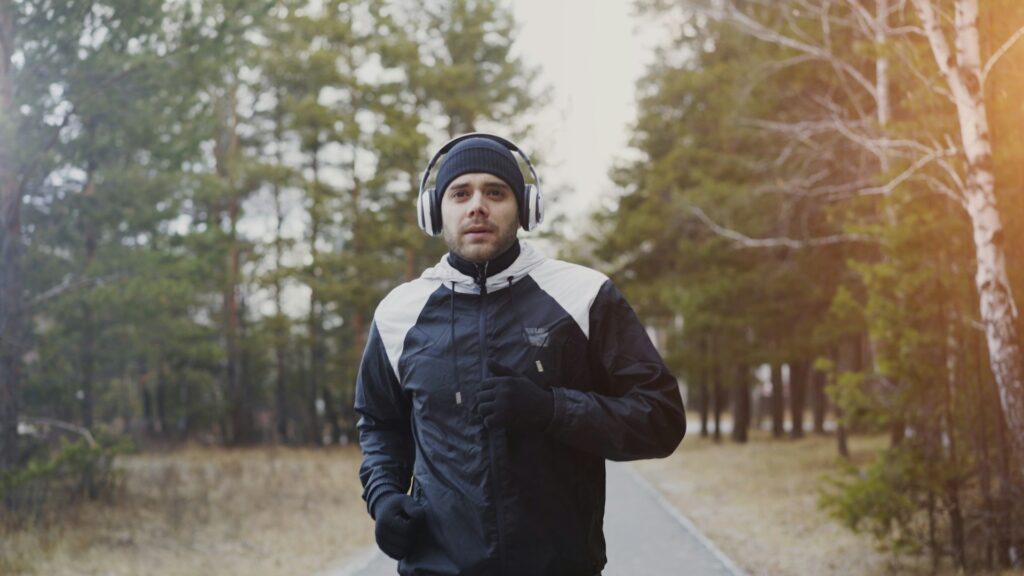
Layer Up
According to the physiotherapy and sports massage experts at One Body LDN, proper layering makes an enormous difference to both comfort and performance. The three-layer system isn’t just fashion advice – it’s based on how your body manages temperature during exercise.
Start with a base layer that wicks moisture away. Never cotton – it holds sweat and leaves you cold. Instead, go for synthetic fabrics or merino wool. Actually, research comparing different fabrics found that merino worn directly against skin provides better insulation and moisture management than synthetics when you’re exercising in cool conditions.
Your mid-layer insulates – think lightweight fleece or softshell. Your outer layer protects against wind and rain. The golden rule? Dress for temperatures about 10°C warmer than it actually is. You should feel slightly chilly for the first five minutes. If you’re toasty standing still, you’ll be overheating within minutes of starting.
Gloves become essential below 10°C, and a thin buff or headband protects your ears without making you overheat. Trust us on this – cold fingers and numb ears will cut your workout short faster than anything else.
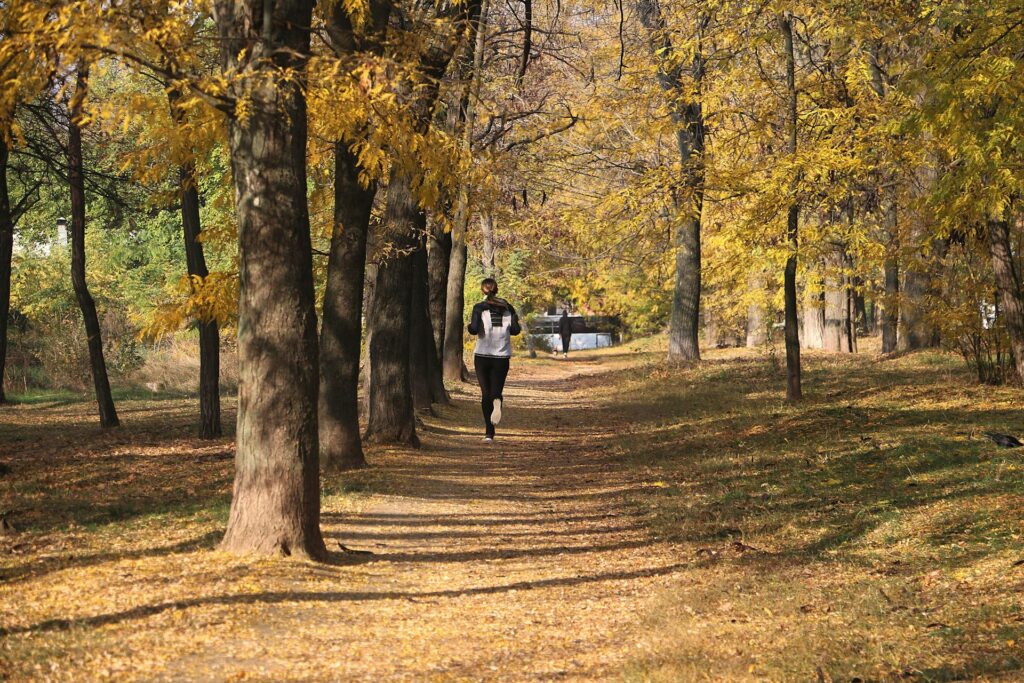
Rethinking Your Timing
Those lovely evening jogs that were so pleasant in July? They’re now happening in complete darkness. Morning exercise actually has better adherence rates – fewer scheduling conflicts and less opportunity to talk yourself out of it after a long day. The challenge, of course, is that autumn mornings are genuinely grim.
Here’s what works: set your alarm 20 minutes earlier than you think you need, lay out your kit the night before, and perhaps invest in a sunrise alarm clock. Or consider lunch breaks – even a 30-minute session in daylight can be more valuable than an hour in the dark.
If you’re committed to evening sessions, proper visibility gear isn’t optional anymore. A decent head torch (at least 200 lumens), reflective clothing, and rear-facing lights if you’re running or cycling. Stick to well-lit routes you know well.
Read: How to feel more energised in the morning
Embrace The Hybrid Approach
One of the smartest strategies is developing a flexible routine that mixes outdoor and indoor training. Having strategies in place for seasons when activity naturally drops, including access to indoor facilities that let you keep moving regardless of weather, can really help.
Create a weather threshold for yourself – maybe anything above 8°C and dry means outdoor training, whilst cold rain shifts you indoors. Having this decision pre-made means no 6am debates with yourself that you’ll inevitably lose to staying in bed. Your long steady runs might stay outdoors (there’s something rather meditative about running in autumn), whilst intervals, strength work, or technical sessions could easily happen inside.
The important thing? Sedentary behaviour increases significantly in winter, so any exercise beats none. Don’t let perfect be the enemy of good.
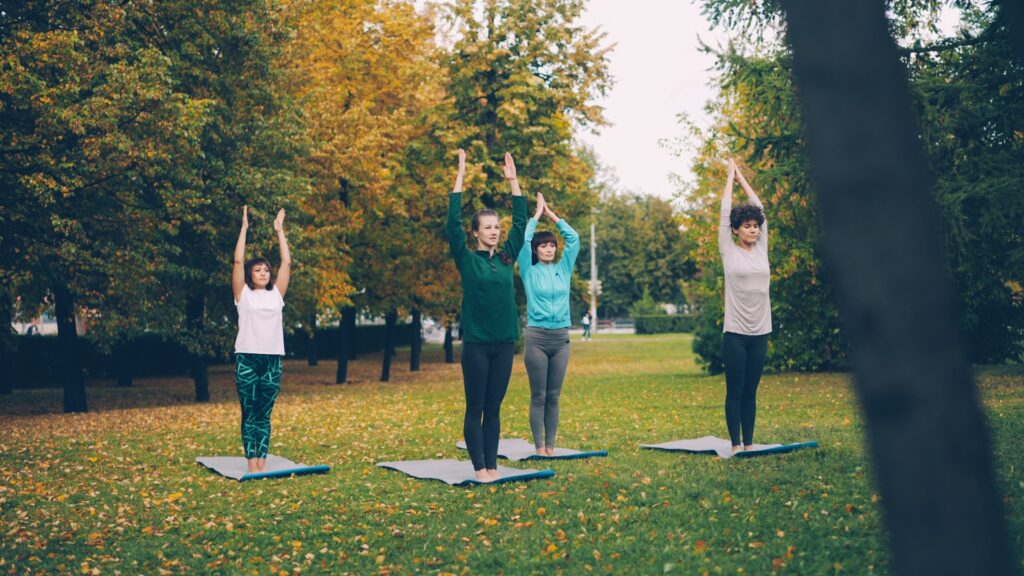
Recovery Takes Longer Now
Cold weather affects recovery more than you’d think. Your body uses extra energy just maintaining temperature, which impacts how quickly you bounce back between sessions. The fix is straightforward: get out of wet or sweaty kit immediately after finishing. That pleasant warm glow disappears fast, and you can become genuinely cold within minutes.
Interestingly, proper warm-ups actually reduce muscle soreness 48 hours after exercise. Your cool-down matters too – spend 5-10 minutes gradually reducing intensity rather than stopping abruptly, then do static stretches whilst you’re still warm.
Sleep often improves in cooler weather, which is brilliant for recovery. The challenge is that shorter days affect your internal clock. Try to grab some natural light at lunch even on non-exercise days – it genuinely helps maintain your mood and energy levels.
Preventing Injury (Because The Stats Are Sobering)
Here’s a statistic that might surprise you: muscle injuries make up over 30% of what sports medicine clinics see, and many are preventable with proper warm-ups. Even more telling, research on workers in cold conditions found they had 25% more musculoskeletal complaints than those doing identical work in warmer conditions.
Your defence strategy is that extended warm-up we discussed, plus slightly easing back on your hardest sessions for the first few weeks of properly cold weather. Give your body time to adapt. Studies on gym attendance show that consistency – same times, same days, same locations – significantly improves long-term adherence. Routine becomes even more valuable when motivation is harder to find.
Add in some strength work if you haven’t already: two 20-30 minute sessions weekly focusing on legs, core, and glutes. Single-leg deadlifts, planks, calf raises, glute bridges – exercises that require minimal kit but build genuine resilience.
Read: From colour to soundtrack, how to optimise your workouts
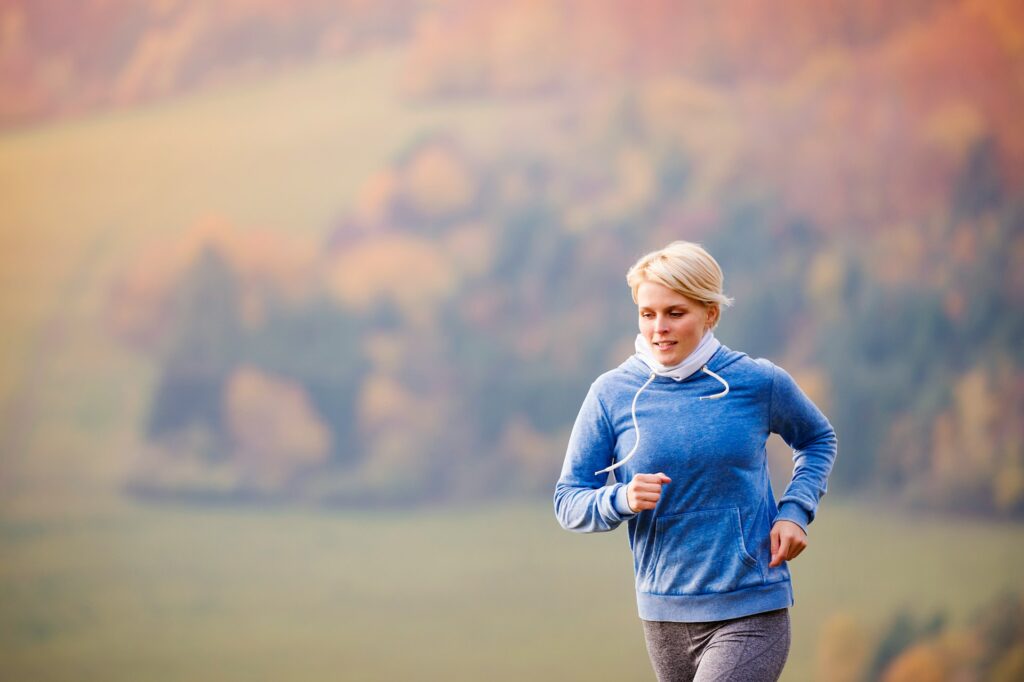
The Mental Game
Exercise is actually one of the best interventions for maintaining mood through autumn, but only if you do it. Build your motivation system now, before you desperately need it. Book classes you’d feel guilty skipping. Find a training partner. Sign up for a spring event that requires winter training.
Create positive associations with autumn exercise. Maybe it’s a particular playlist, a favourite café for post-workout coffee, or routes where the autumn colours and aromas are spectacular. Make it something you actually look forward to, not just endure.
Adjust Your Expectations (Your Body Has)
Cold muscles generate less power and everything feels harder. This is a physiological fact, not a weakness. Stop comparing your autumn pace to summer personal bests. Studies show that 79% of people see improved performance with proper warm-ups, so investing that time pays off – even if your absolute numbers are lower than July.
Consider making autumn your base-building phase. Focus on aerobic fitness, strength development, and technique rather than chasing speed. This actually aligns with how your body naturally responds to seasonal changes, and sets you up brilliantly for spring.
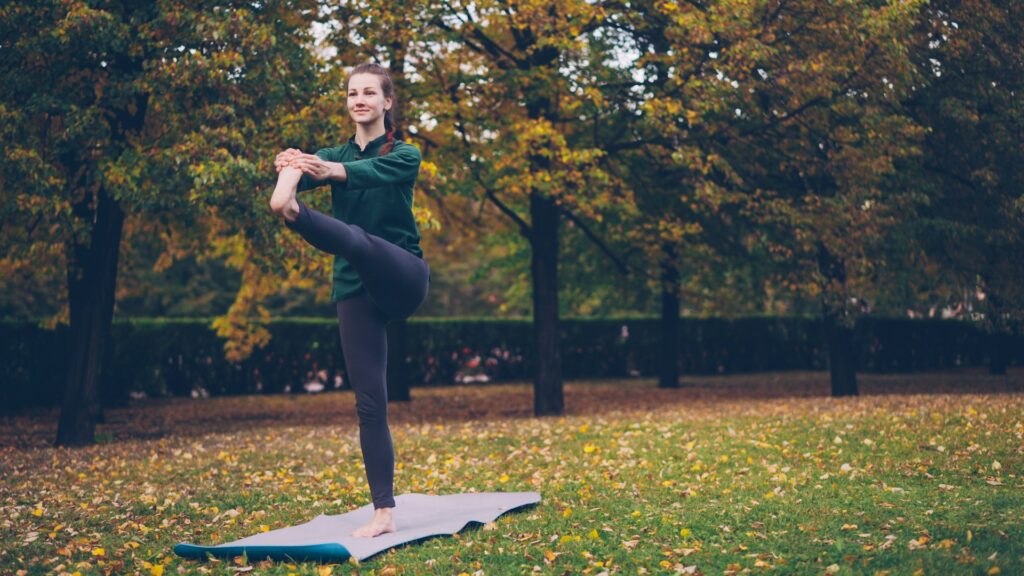
When Indoor Really Is Better
Some days, going outside is just daft. Heavy rain with wind, ice, or simply truly grim conditions that will make you miserable. Physical activity drops when it rains – no surprise there – and fighting it becomes counterproductive.
Have a genuine indoor alternative you actually enjoy. Gym sessions, swimming, indoor cycling, climbing, or even home workouts.Indeed, many athletes actually do their best strength and conditioning work inside where they can control everything.
Making It Last
Here’s the sobering bit: consistency in the gym is genuinely challenging, especially through darker months.
Be honest about what you’ll actually maintain. Start small – maybe add just one indoor session weekly whilst keeping your outdoor routine initially. Gradually adjust as the weather worsens. Track whether you’re showing up, not just how fast or far you went. Three 30-minute sessions completed beats five planned hours where you manage two.
Even light activity matters enormously in replacing the sedentary time that naturally increases in autumn and winter. Your summer fitness doesn’t have to vanish with the leaves – it simply needs intelligent adaptation based on how temperature genuinely affects your body.
The transition from summer to autumn doesn’t mean fitness failure. It’s evolution, backed by proper understanding of why cold affects performance and what actually works to maintain momentum. Embrace the change, adjust your approach, and remember: there’s no such thing as bad weather, only inappropriate kit choices and unrealistic expectations.
Now, about setting that morning alarm…





